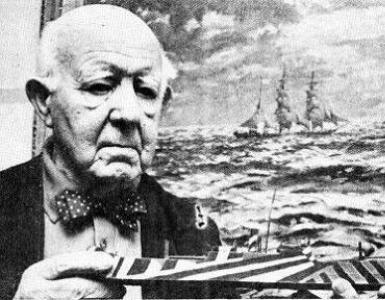Isaac Levitan over eternal rest 1894. In the order of the general queue. Description of the painting by Levitan I.I. "Over Eternal Peace"
Wikipedia has articles about other people with that surname, see Levitan. Isaac Levitan ... Wikipedia
- (1860 1900), Russian painter. Landscape painter. Studied at MUZhVZ (1873-1885) under A. K. Savrasov and V. D. Polenov; taught there (since 1898). Participated in exhibitions of the Wanderers (since 1884; since 1891 member of the TPHV), the Munich Secession (since 1897), the Mir magazine ... Art Encyclopedia
Isaak Ilyich (1860, Kibartai, Lithuania - 1900, Moscow), Russian painter and graphic artist; outstanding landscape painter. Born in the family of a railway employee. In 1870 he entered the Moscow School of Painting, Sculpture and Architecture (MUZHVZ), where he studied with ... ... Art Encyclopedia
- (1860 1900), Russian painter Wanderer. The creator of the “landscape of mood”, which is characterized by a wealth of poetic associations, major (“March”, 1895; “Lake. Russia”, 1900) or mournful spirituality of the image (“Above Eternal Peace”, 1894). ... ... encyclopedic Dictionary
Isaac Levitan I. Levitan, Self-portrait (1880) Date of birth: 1860 Place of birth: Kibarty, Kovno province Date of death ... Wikipedia
I. Levitan, Self-portrait (1880) Date of birth: 1860 Place of birth: Kibarty, Kovno province Date of death ... Wikipedia
Isaac Levitan I. Levitan, Self-portrait (1880) Date of birth: 1860 Place of birth: Kibarty, Kovno province Date of death ... Wikipedia
Isaac Levitan I. Levitan, Self-portrait (1880) Date of birth: 1860 Place of birth: Kibarty, Kovno province Date of death ... Wikipedia
Isaac Levitan I. Levitan, Self-portrait (1880) Date of birth: 1860 Place of birth: Kibarty, Kovno province Date of death ... Wikipedia
Books
- Isaac Levitan, . We get acquainted with the work of our great painters, as a rule, in early childhood. Whether it's reproductions of paintings hanging on the walls of kindergartens and schools, or reduced versions of them in ...
- Masterpieces from A to Z: Issue 4,. With the new project of the "Gallery of Russian Painting" publishing house, art lovers will have new - truly unique - opportunities. We offer you the most complete thematic collections ...
Description of the painting by Levitan “Above Eternal Peace”
Isaac Ilyich Levitan is a master of mood landscape.
Many landscapes of Russian nature belong to his stroke.
The work "Above Eternal Peace" is considered the most Russian painting ever painted.
In this plot of the picture, the artist contrasts the triumphant eternity of nature with the absurdity of human life.
Earthly passions seem insignificant and ridiculous against the formidable eternity capable of swallowing everything.
The picture is painted in cold shades and not very bright colors.
The upper part of the picture is occupied by cold, massive, leaden clouds.
It looks like they are about to fall to the ground from their weight.
In the foreground is a steep cliff.
It has a small church and a cemetery.
Apparently, they have long been forgotten.
The church is very old and rotten, and the cemetery is abandoned, this can be seen from the bent crosses.
The space from the cliff to the clouds is occupied by the lake.
Just looking at him makes me shudder to the bone.
Gloomy and cold vast expanse.
You can see how the wind tends to the ground cemetery trees.
A lot of different thoughts are caused by Levitan's painting "Above Eternal Peace".
And perhaps while drawing, its author experienced his emotional experiences and fears, but whoever looks at her now feels the same for himself.
Some think about their unfulfilled hopes and dreams, others are saddened by their insignificant life, the third is like an impetus to a new beginning.
The beginning of something better and more colorful than dark and cold.
But all these thoughts are united by one, the most basic and final.
Everyone, looking at the picture, thought about the transience of his existence.
Time does not stand still.
We need to live today and now.
Massive clouds will always be replaced by a bright sky and the sun.
Make your life brighter.
Isaac Levitan.
Over eternal rest.
1894.
Canvas, oil. 150x206.
Tretyakov Gallery, Moscow, Russia.
“Above Eternal Peace” is the third among the paintings of a kind of dramatic trilogy created by Levitan in the first half of the 1890s. - (along with the paintings "At the pool" and "Vladimirka").
For the first time in the picture of the master, in addition to the poetic beauty of eternal nature, a philosophical attitude to the frailty of human existence is felt. Under swirling lead-lilac clouds, on the steep and deserted shore of a huge lake stretching to the very horizon, stands a dilapidated wooden church.
Behind her, a few trees bend under the sharp gusts of wind, sheltering a dull churchyard. And around - not a soul, and only a dim light in the window of the church gives an illusory hope for salvation.
It is no coincidence that the artist chose a similar perspective for displaying the image. The picture is full of feelings of deep melancholy, impotence and loneliness, but the author's point of view is very expressive, which directs the viewer upwards, towards cold air currents.
"Above Eternal Peace" is one of the most significant works Levitan, about which he himself wrote in a letter to Pavel Tretyakov:
"I'm all in it.
With all my psyche
with all its contents...
Levitan painted this picture to the sounds of the Funeral March from " Heroic Symphony"Beethoven. It was under such solemn and sad music that a work was born, which one of the artist's friends called "a requiem to himself."
Download Symphony No. 3 "Heroic" . free on player.com
Sergey Yesenin.
Tears
“The more I saw and talked with the amazingly sincere, simple, thoughtfully kind Levitan, the more I looked at his deeply poetic landscapes, the more I began to understand and appreciate ... great feeling and poetry in art ...
I realized that it is not necessary to copy objects and paint them diligently so that they seem to be as effective as possible - this is not art.
I understood that in any art the most important thing is the feeling and the spirit - the verb by which the prophet was commanded to burn people's hearts. That this verb can sound both in paint, and in a line, and in a gesture - as in speech.
I drew from these new impressions the appropriate conclusions for my own work in the theatre"
(F.I. Chaliapin).
... Levitan's paintings caused the same pain as memories of a terribly distant, but always tempting childhood.
Levitan was an artist of a sad landscape. The landscape is always sad when a person is sad. For centuries, Russian literature and painting have spoken of a dull sky, lean fields, and lopsided huts. "Russia, impoverished Russia, your black huts to me, your wind songs to me, like the first tears of love."
From generation to generation, man looked at nature with hazy eyes from hunger. She seemed to him as bitter as his fate, like a loaf of black wet bread. Even the shining sky of the tropics will seem inhospitable to the hungry.
Thus, a stable poison of despondency was developed. He silenced everything, depriving the colors of their light, play, elegance. The soft diverse nature of Russia has been slandered for hundreds of years, was considered tearful and gloomy.
Artists and writers lied about her without realizing it.
Levitan came from a ghetto deprived of rights and a future, a native of the Western Territory - a country of small towns, consumptive artisans, black synagogues, crowding and scarcity ...
Levitan's paintings require a slow examination. They don't dazzle the eye. They are modest and precise, like Chekhov's stories; but the longer you peer into them, the sweeter the silence of provincial settlements, familiar rivers and country roads becomes.
Levitan saw the beauty of rain and created his famous "rainy works": "After the Rain" and "Above Eternal Peace" ...
In the painting "Above Eternal Peace" the poetry of a rainy day is expressed with even greater force. The painting was painted on the shores of Lake Udomlya in the Tver province.
From the slope, where dark birch trees bend under the gusty wind and a rotten log church stands among these birch trees, the distance of a deaf river opens up, meadows darkened by bad weather, a huge cloudy sky. Heavy clouds, saturated with cold moisture, hang above the ground. Slanting canvases of rain cover the open spaces.
None of the artists before Levitan conveyed with such sad force the immeasurable distances of Russian bad weather. It is so calm and solemn that it feels like greatness.
Konstantin Paustovsky. Isaac Levitan.
The painting by Isaac Levitan "Above Eternal Peace" is the conclusion of the dramatic trilogy, which the artist created in the early 1890s. It is customary to attribute the painting “At the Pool” and “Vladimirka” to this trilogy. Many people catch in the painting “Above Eternal Peace” not only the glorification of the eternal beauty of nature, but also a philosophical reflection on the frailty of human existence. A dilapidated wooden church stands on the deserted shore of a huge lake under swirling lead-purple clouds. In the background is a dull churchyard, over which trees are bent under sharp gusts of wind. There is not a soul around, only the light flickering in the window of the church gives the wanderer a little hope for salvation. The picture is filled with a feeling of deep longing, loneliness and powerlessness. The artist did not accidentally determine the angle of displaying the image. The point of view of the author of the picture is felt, which directs the viewer's gaze upwards in spite of the cold air currents.
Levitan's work "Above Eternal Peace" is rightfully the most striking and significant in the artist's work. In his letters to P. Tretyakov, Levitan wrote that he himself was fully embodied in her. With its content and psychological state, it fully corresponds to his mood. It is no coincidence that one of Levitan's friends called this work "Requiem to himself." This work was born to the sad solemn music of Beethoven, namely, the funeral march from the Heroic Symphony.
Levitan is considered an artist of a sad landscape. His landscapes often cause pain and despondency. Many associate this with memories of the distant and sad childhood of the author, because the landscape is always sad when a person is sad. It is better to consider Levitan's painting "Above Eternal Peace" slowly and thoughtfully. Like many other works, it does not stun the eye, but on the contrary is accurate and modest, similar to Chekhov's stories, but the deeper you look into it, the sweeter the depth and its piercing becomes. Feeling the charm of the rains, the artist created famous paintings"After the Rain" and "Above Eternal Peace". The painting “Above Eternal Peace” was painted in the Tver province, on the shores of Lake Udomlya. In it, the poetry of a rainy rainy day is expressed with great force.
Perhaps it is impossible to name another artist other than Levitan, who could convey the immeasurable expanses of Russian bad weather with such sad force. The greatness of this bad weather is felt through peace and triumph.













